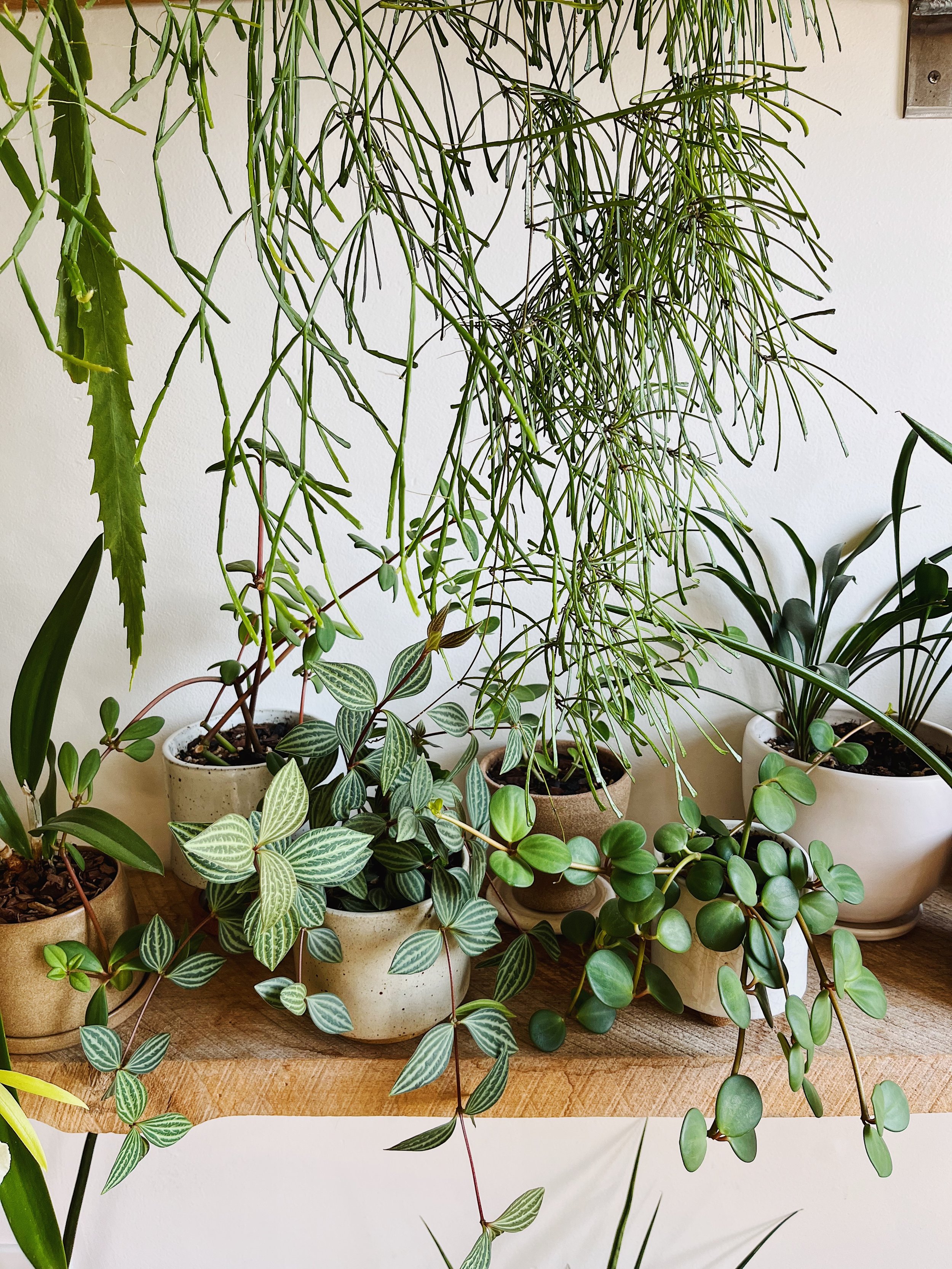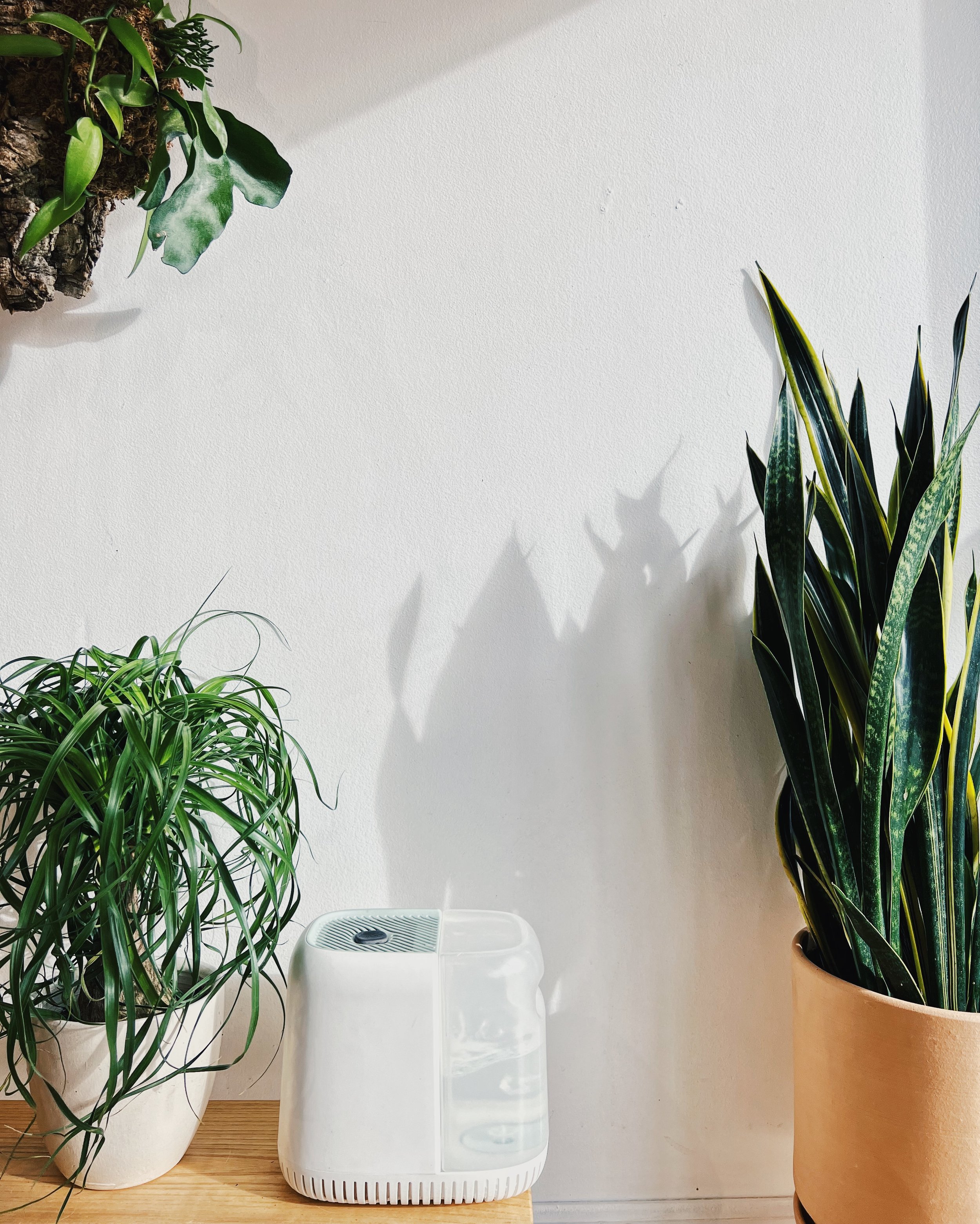Ways to Increase Humidity for Your Houseplants
During the winter, many of us will have our heating appliances turned on, and the air indoors will get drier as the heat wicks away at any remaining moisture in the air. In the same way that this causes at least some initial discomfort for us, it also causes discomfort for some our houseplants.
Most tropical plants will enjoy average or slightly elevated humidity levels indoors to match their native growing environments, but there are thankfully ways to keep houseplant humidity consistent!
What houseplants need humidity?
Before we dive in, it’s important to figure out which houseplants benefit from additional humidity indoors. A good rule of thumb is that the thinner the leaf, the more that plant would benefit from additional humidity indoors.
Houseplants like Philodendrons, Anthuriums, Alocasias, Calatheas, and fern species will all appreciate extra humidity indoors. The ideal humidity for these houseplants falls somewhere above 60% humidity, depending on the specific species of plant. Other plants, such as Hoyas, jungle cacti, and Peperomias, will appreciate extra humidity, but it isn’t a necessity for their survival.
Houseplants with either thicker or waxier leaves will typically manage fine indoors without additional humidity. Arid houseplants that store large amounts of water, such as succulents and cacti, prefer significantly lower humidity indoors—too much can actually cause these plants to rot!
Clustering plants together will increase the ambient humidity in that area as water evaporates from their potting medium.
Plants work better together.
We can all use a little support from time to time, and our houseplants are no different. Grouping them together is a great way to increase humidity for your houseplants. As water transpires from their stems and leaves, that water vapor becomes available humidity—group enough plants together, and that available humidity becomes a more significant amount, capable of raising the humidity around your green friends who need it most.
Create a humidity tray.
Humidity trays for houseplants are quick, easy ways to increase humidity around particular plants without the aid of a humidifier. For this, all you’ll need is a drip tray, enough pebbles or rocks to fully cover the base of your tray, and water. Once your tray’s base is covered with pebbles or rocks, fill it with water just to where the water rests on top of the pebbles, and you’ll have a humidity tray for your houseplants!
As the water evaporates from the tray and into the surrounding space, it will increase the humidity right around your plant. This method works well for houseplants that are more isolated from others, or if you have a smaller number of plants that appreciate a boost in humidity.
Creating a humidity tray benefits the plant that is directly sitting on top of it as the water evaporates from the tray. This method works great for standalone plants.
Invest in a humidifier.
Good for you and your plants, humidifiers are a fantastic investment for your space. The ideal humidity for most tropical plants falls around 60%, and humidifiers help keep that range of humidity consistent. Depending on where you’re located, these could be beneficial to use year-round, or in the winter when your heating system kicks on indoors and dries the air out.
Humidifiers provide a steady stream of mist that raises the ambient humidity in an area. When placing these in your space, it might be useful to place them closest to your plants that would benefit from the elevated humidity the most—as the mist disperses in your space, the concentration of humidity will become lower the farther away from the humidifier your plants are.
To mist or not to mist?
Whether or not misting plants is necessary is a much-debated topic. Ultimately, if you’re misting your plants to increase the humidity, it will do just that, but not for long—as the mist disperses around your plant, the humidity increases for a few minutes in that direct area, and then drops back to its usual level shortly after.
To make a more lasting change in your space’s humidity levels, you would need the consistency of a humidifier. That being said, if you’re looking to feed Tillandsias and other epiphytic plants through their leaves with a mister and some liquid fertilizer, misting will work well for that (but we still recommend a weekly saturation for them).
All of this being said, if misting is a practice you enjoy and it brings you closer with your plants, continue doing so. Misting isn’t bad for your plants by any means, and in some cases, it is practical.
If you do anything different to increase the humidity for your houseplants, we’d love to hear in the comments section below!
Adding a humidifier to your space will increase the overall humidity in your home without much effort.
Words by: Egan Thorne
Photos by: Egan Thorne & Sebastian Muñoz



